Nestled halfway between Rome and Naples on the Tyrrhenian coast, Sperlonga captured my heart the moment I first glimpsed its dazzling white buildings against the deep blue Mediterranean. This enchanting seaside town feels like a secret slice of Greece tucked into the Italian coastline.
With narrow winding streets and charming blue doors that perfectly complement the sparkling sea below, Sperlonga looks like something out of a postcard.
What makes Sperlonga truly special is its unique combination of Mediterranean perfection. A whitewashed medieval village is dramatically perched on a cliff overlooking pristine beaches and crystal-clear waters.
During my visit last summer, I spent hours wandering through the village’s maze-like pathways. Each turn revealed another picture-perfect view that seemed designed for Instagram but has existed for centuries.
The small town of under 4,000 residents transforms during vacation season when travelers discover this hidden gem. I found myself mesmerized by how the bright white buildings create a stunning contrast against both the azure sea and the clear blue sky.
Sperlonga offers that rare travel experience where time seems to slow down, allowing you to savor simple pleasures. Morning espresso overlooking the Gulf of Gaeta, afternoon swims in transparent waters, and evenings watching the sunset paint the white village in golden hues.
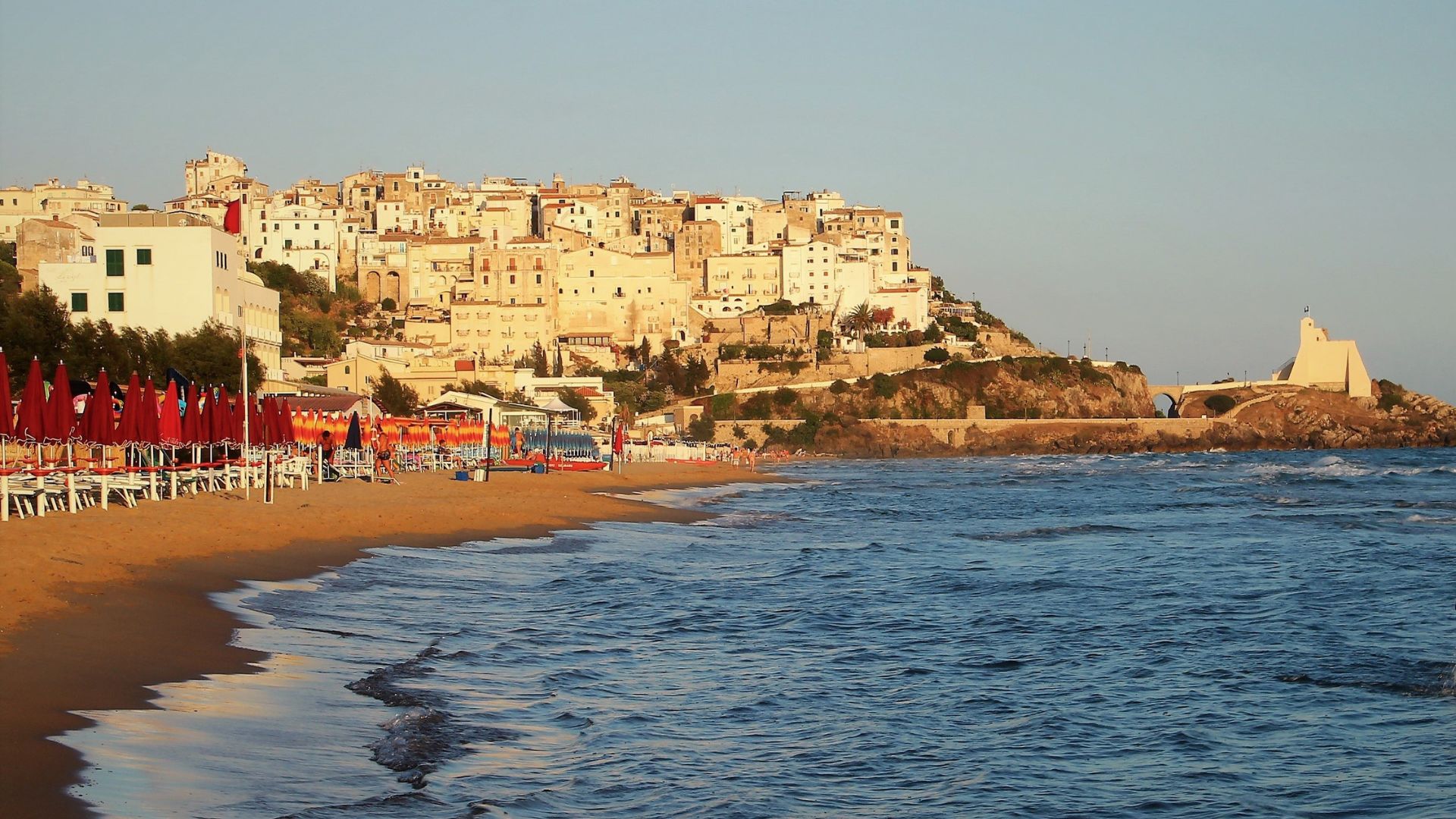
Discovering Sperlonga: The Jewel of the Tyrrhenian Sea
Nestled halfway between Rome and Naples, Sperlonga captured my heart with its dazzling white buildings perched dramatically above the crystal-clear blue waters. This small Italian coastal gem combines breathtaking natural beauty with layers of fascinating history.
Geographical Wonders and Beautiful Beaches
The first thing that struck me about Sperlonga was its perfect location. Situated in the Gulf of Gaeta on the Tyrrhenian coast, this small town of under 4,000 residents offers some of Italy’s most spectacular coastal views.
I spent hours wandering the narrow pathways that wind through the brilliant white buildings. These alabaster structures create a stunning contrast against the deep blue Mediterranean Sea below.
The beaches here are magnificent. Long stretches of golden sand meet impossibly blue waters, creating a paradise for swimmers and sunbathers alike.
During my summer visit, I noticed how the population doubles as visitors flock to experience this hidden Mediterranean treasure. Despite this influx, Sperlonga maintains its authentic charm.

Sperlonga’s Historical Tapestry
Sperlonga’s history runs deep, with connections to ancient myths and Roman emperors. Walking these streets, I felt transported through centuries of Mediterranean history.
One of the most fascinating historical sites I explored was the villa of Sperlonga, built between 30 and 20 BCE along the Tyrrhenian Sea. The three-part structure reveals the area’s importance during Roman times.
The town bears the lingering presence of Ulysses, with historical evidence of the mythical hero still visible throughout the area. Artists, writers, and actors have long been drawn to this inspiring setting.
Only an hour’s drive from Rome, Sperlonga offers visitors a perfect retreat from urban exhaustion. I found it to be the ideal blend of cultural richness and relaxing coastal charm.

A Journey Through Time: Sperlonga’s Rich History
Sperlonga’s story stretches back thousands of years, weaving through empires and eras that have left their mark on this stunning white village. Walking through its narrow streets today, I can feel layers of history beneath my feet.
Roots in the Roman Empire and Middle Ages
Sperlonga first gained prominence during Roman times when wealthy patricians recognized its beauty as an ideal location for vacation villas. The name “Sperlonga” comes from Latin “speluncae” meaning caves, referring to the natural sea grottos that dot the coastline.
During my exploration, I discovered that after the fall of the Roman Empire, Sperlonga faced numerous challenges. The town became a target for Saracen pirates in the Middle Ages, forcing residents to build defensive structures. You can still see remnants of watchtowers along the coast today.
The medieval settlement developed on the hilltop for protection, creating the maze-like streets and tight passages that give the old town its characteristic charm. These winding pathways saved lives when raiders came from the sea.
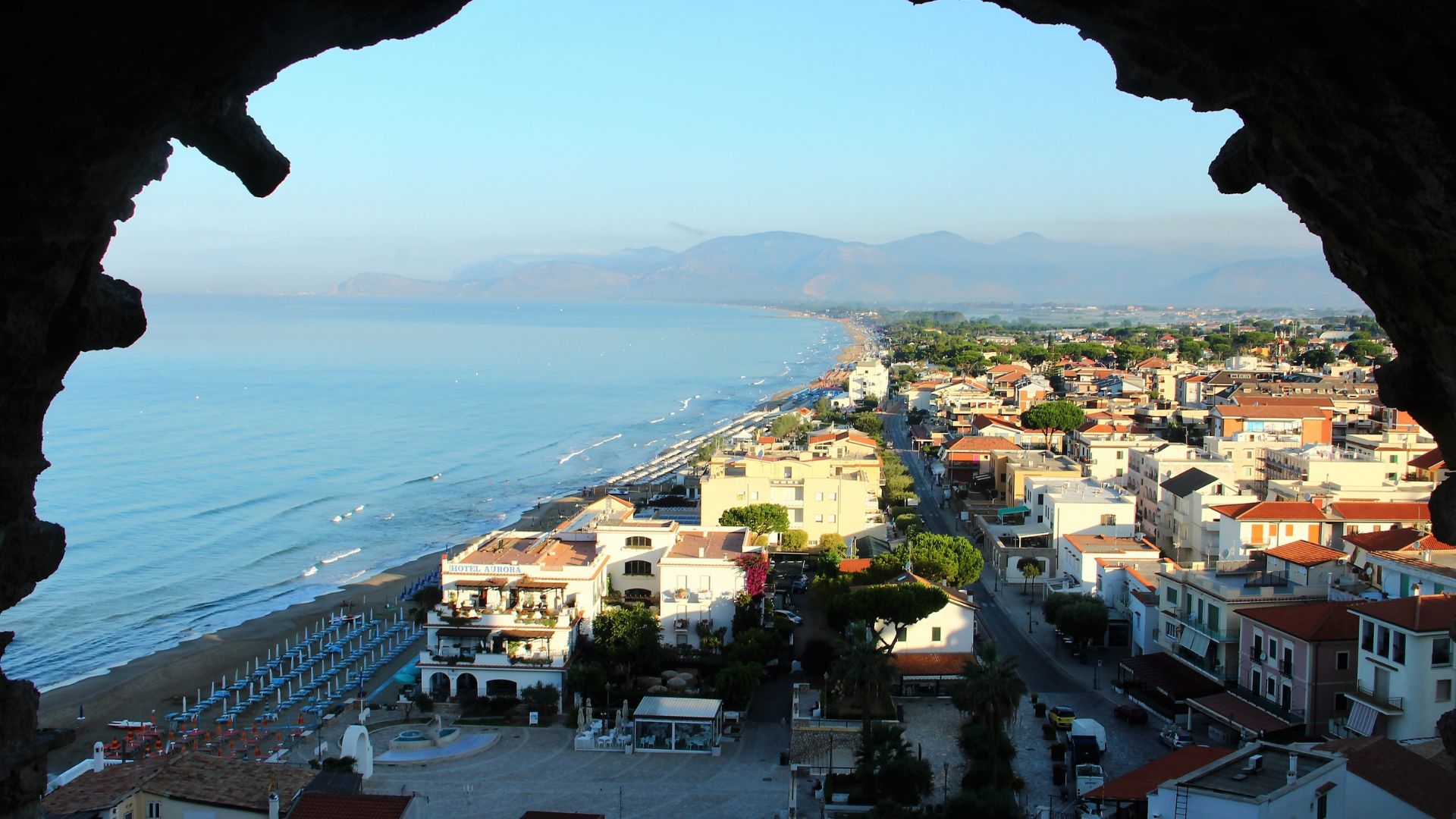
Augustus and the Sculptural Triumphs
Emperor Tiberius, successor to Augustus, built his magnificent seaside villa here around 30 BCE. I was amazed to learn that this wasn’t just any vacation home – it featured an elaborate grotto filled with spectacular sculptural groups.
The most famous sculptures depicted scenes from Homer’s Odyssey, particularly the dramatic encounter between Odysseus and the cyclops Polyphemus. These masterpieces were discovered in the 1950s and represent some of the finest Hellenistic sculpture found in Italy.
The villa complex stretched along the coast, with the natural sea cave transformed into a summer dining area. Imagine enjoying fresh seafood while waves crashed nearby! Tiberius hosted lavish parties here until a roof collapsed during one dinner, which nearly killed him.
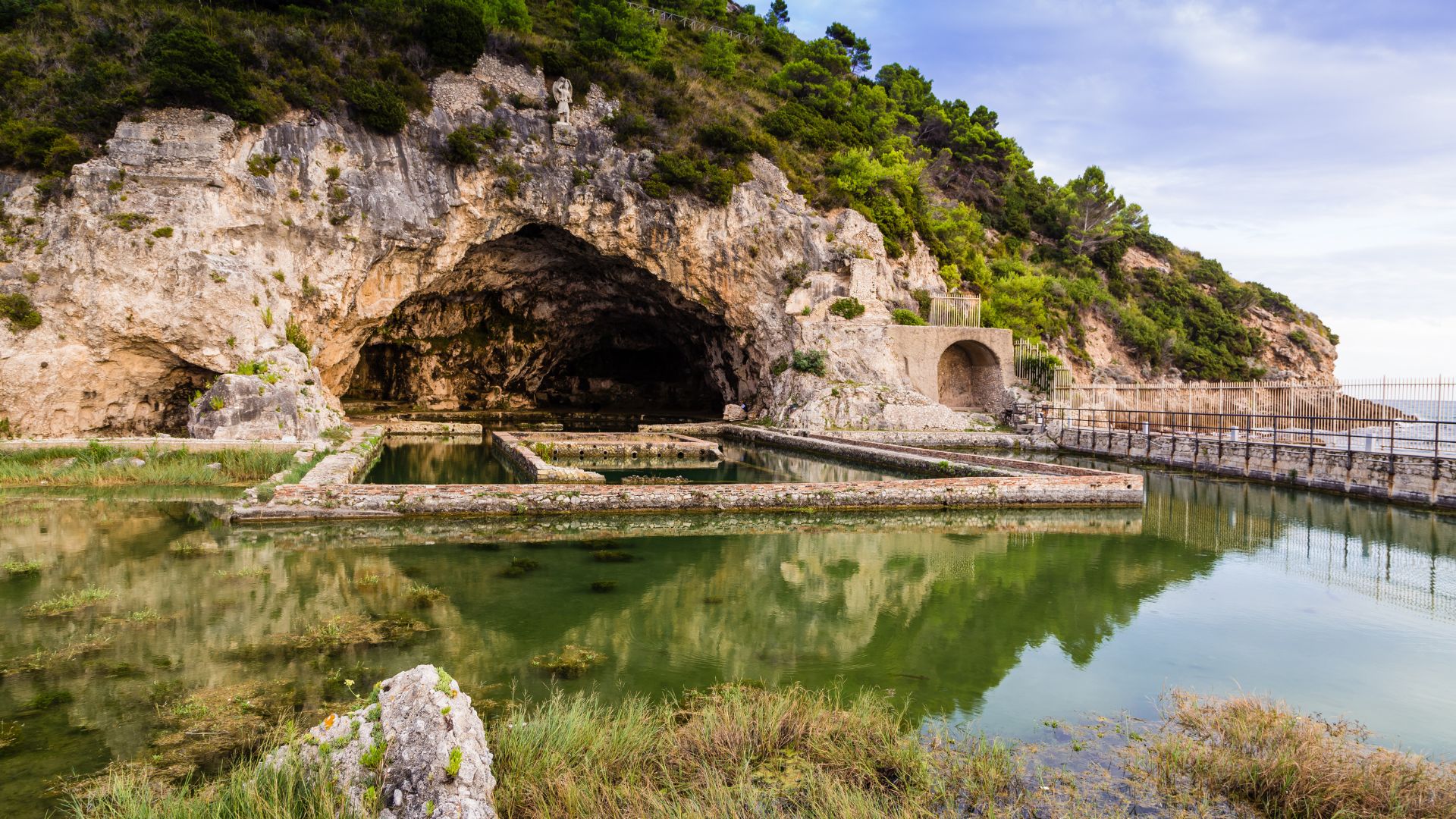

From Hellenism to the Italian Renaissance
The sculptural treasures found in Sperlonga show strong Hellenistic influences, revealing cultural connections between Rome and Greece. Created by Rhodian sculptors, these works demonstrate how Greek artistic traditions were embraced and celebrated by Roman elites.
During the Renaissance, Sperlonga’s strategic position between Rome and Naples gave it renewed importance. Artists and scholars traveling between these cultural centers often passed through, bringing new ideas and architectural influences.
I noticed how Renaissance elements blend with medieval structures in the town center. Several buildings feature elegant arched doorways and decorative elements that speak to this period of cultural revival.
The town’s distinctive white architecture took shape during this era, creating the dazzling contrast against the blue Mediterranean that captivates visitors today. This visual trademark makes Sperlonga instantly recognizable and has preserved its unique character through centuries.
Culinary Delights: Savoring Sperlonga’s Gastronomy
Sperlonga’s cuisine reflects its coastal identity with fresh seafood taking center stage alongside traditional Italian specialties and local agricultural treasures.
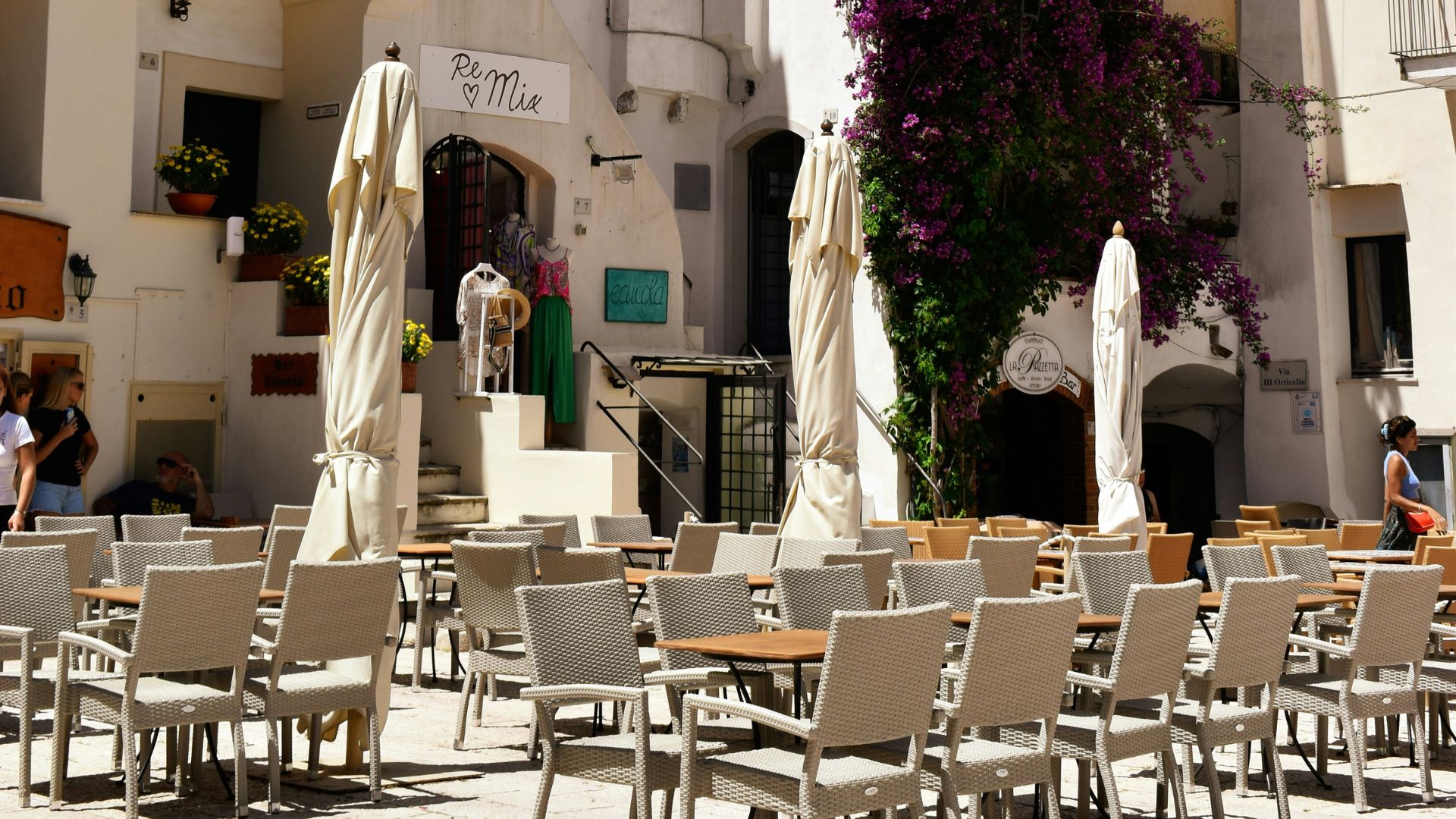
Indulging in Italian Cuisine and Local Flavors
When I visited Sperlonga, I discovered that seafood dominates the local menus. Restaurants like Gli Archi, Bar Trani, and Al Vignale serve incredible fresh fish caught daily from the Mediterranean.
The narrow streets of Sperlonga’s old town hide charming eateries where I enjoyed authentic pasta dishes with seafood. My favorite was pasta alle vongole (with clams), perfectly paired with a glass of crisp local white wine.
In Piazza Fontana, I found cozy cafés serving traditional baked goods that make for perfect breakfast or afternoon treats. The local prosciutto is remarkable – aged according to time-honored methods that give it a distinct flavor.
Many restaurants offer tasting menus that showcase Sperlonga’s culinary variety. I recommend trying:
- Fresh calamari and octopus dishes
- Seafood risotto with local herbs
- Traditional pasta with anchovy sauce
- Freshly baked focaccia with olive oil
Wine and Olive Oil: Agricultural Excellence
Sperlonga’s surrounding hills produce exceptional wines and olive oils that complement the local cuisine perfectly. The Mediterranean climate creates ideal growing conditions for both grapes and olive trees.
I toured a small local vineyard where they produce white wines that pair beautifully with seafood. Many restaurants offer wine tastings featuring labels from Lazio that you won’t find exported elsewhere.
The olive oil from this region deserves special attention. With protected geographical indication status, local olive oils have a distinctive peppery finish that elevates simple dishes.
During my visit, I learned how local producers still use traditional cold-pressing methods. Family-run farms invite visitors to sample their oils and learn about production techniques.
Look for bottles labeled with the regional certification – they make perfect souvenirs and allow you to bring a taste of Sperlonga home.
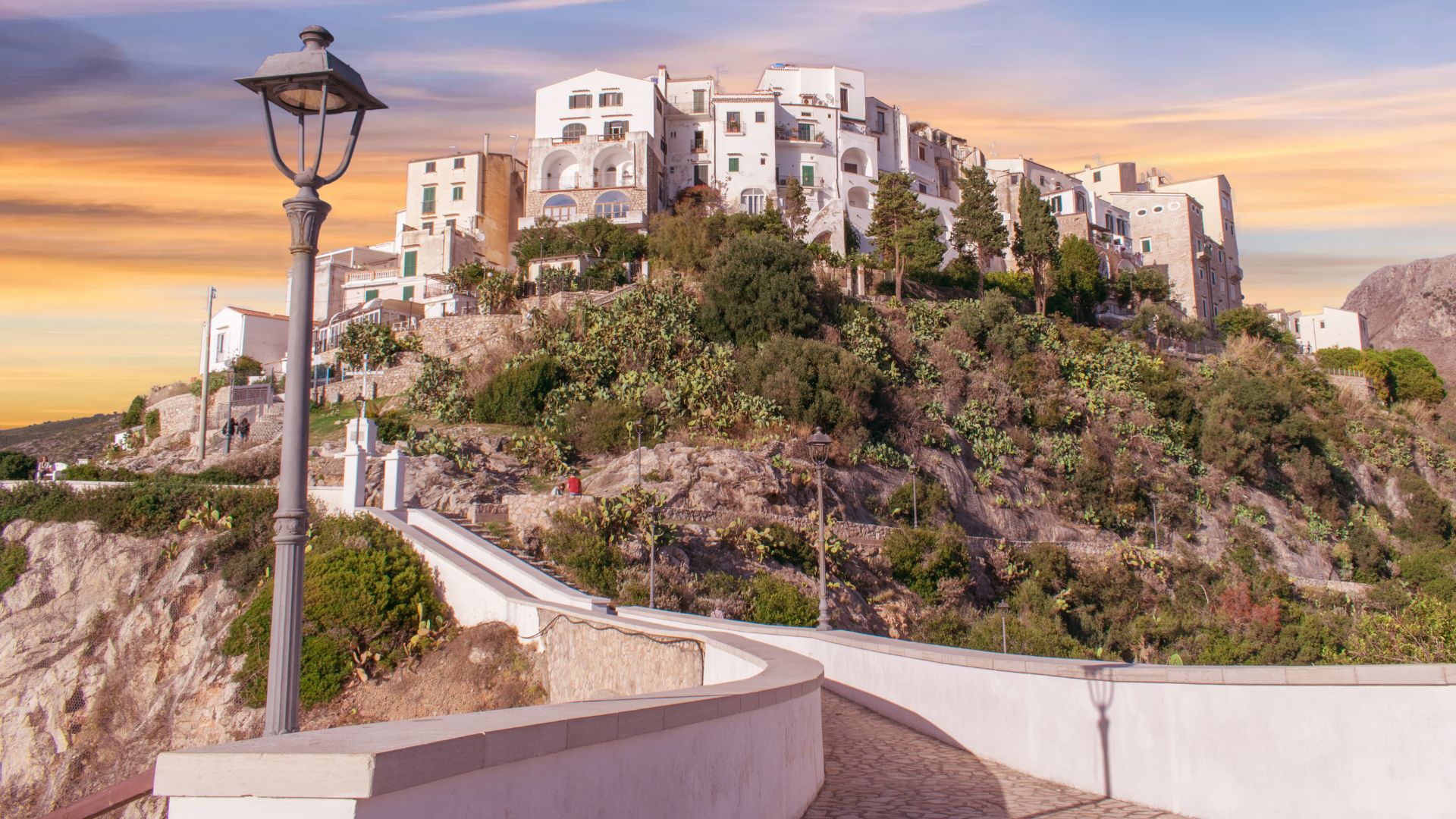
Cultural Immersion: Exploring Local Art and Traditions
Sperlonga offers more than just stunning beaches—it’s a living museum where ancient Roman influences blend with traditional Italian village life. The town’s artistic heritage and cultural practices create a rich tapestry that visitors can experience first-hand.
The Intersection of Italian Culture and Art History
When I wandered through Sperlonga, I was amazed by how art and history intertwine at every corner. The Archaeological Museum houses remarkable sculptures from Emperor Tiberius’ villa, dating back to the 1st century CE.
The famous Grotto of Tiberius contains impressive marble groups depicting scenes from Homer’s Odyssey—particularly the story of Ulysses. These sculptures represent some of the finest examples of Roman art from this period.
During my visit, local guides explained how these ancient works influenced later Italian artistic movements. The attention to detail and dramatic poses in these sculptures show why they’re considered masterpieces.
Many villagers proudly maintain connections to this artistic legacy through contemporary work that references classical themes.

Celebrating Traditional Crafts and Festivities
I discovered that Sperlonga’s cultural calendar is packed with events that showcase local traditions. Summer festivals feature handmade crafts, regional cuisine, and performances that bring the community together.
The town celebrates several religious festivals throughout the year. During these events, I watched as colorful processions wound through the narrow white streets.
Local artisans still practice traditional crafts like:
- Ceramics painting with Mediterranean motifs
- Basket weaving using local materials
- Handmade lace following centuries-old patterns
The food traditions are equally impressive. I participated in a cooking class where we prepared seafood dishes using recipes passed down through generations.
Market days transform the town center into a vibrant social hub where locals gather to exchange news while shopping for fresh produce and handmade goods.
Beyond the Village: Experiencing Surrounding Natural Beauty
Venturing outside Sperlonga rewards travelers with breathtaking natural scenery and active adventures that showcase the true character of this coastal region. The landscape transforms from whitewashed buildings to wild Mediterranean terrain with endless opportunities for exploration.

Captivating Landscapes and Sunset Views
The hills surrounding Sperlonga offer spectacular vantage points for nature lovers. I discovered several hiking trails that wind through olive groves and Mediterranean brush, revealing stunning panoramas at every turn.
For the ultimate sunset experience, I recommend heading to Monte Circeo National Park, just a short drive away. The light reflecting off the Tyrrhenian Sea creates a magical golden glow as the sun dips below the horizon.
The curvy coastal roads mentioned in the search results weren’t exaggerating – they provide breathtaking glimpses of the blue sea nestled between rolling hills. My favorite viewpoint is from the road heading north toward Terracina, where you can see Sperlonga’s white buildings dramatically contrasted against the deep blue water.
Outdoor Adventures and Agritourism
The countryside around Sperlonga presents perfect opportunities for active travelers and food enthusiasts alike.
I rented a bike from a local shop and explored the rural roads connecting small farms and vineyards.
Several family-run agricultural estates welcome visitors for tours and tastings.
I spent a delightful afternoon at an olive oil producer, learning about traditional harvesting methods before sampling their peppery, fresh-pressed oil with local bread.
Water activities abound beyond the main beaches.
Kayaking along the coastline reveals hidden coves and dramatic rock formations inaccessible by land.
Local outfitters offer reasonable daily rentals with optional guides.
For a truly authentic experience, I joined a cooking class at a local farm. We harvested vegetables and learned to prepare regional specialties using ingredients grown just steps away from the kitchen.
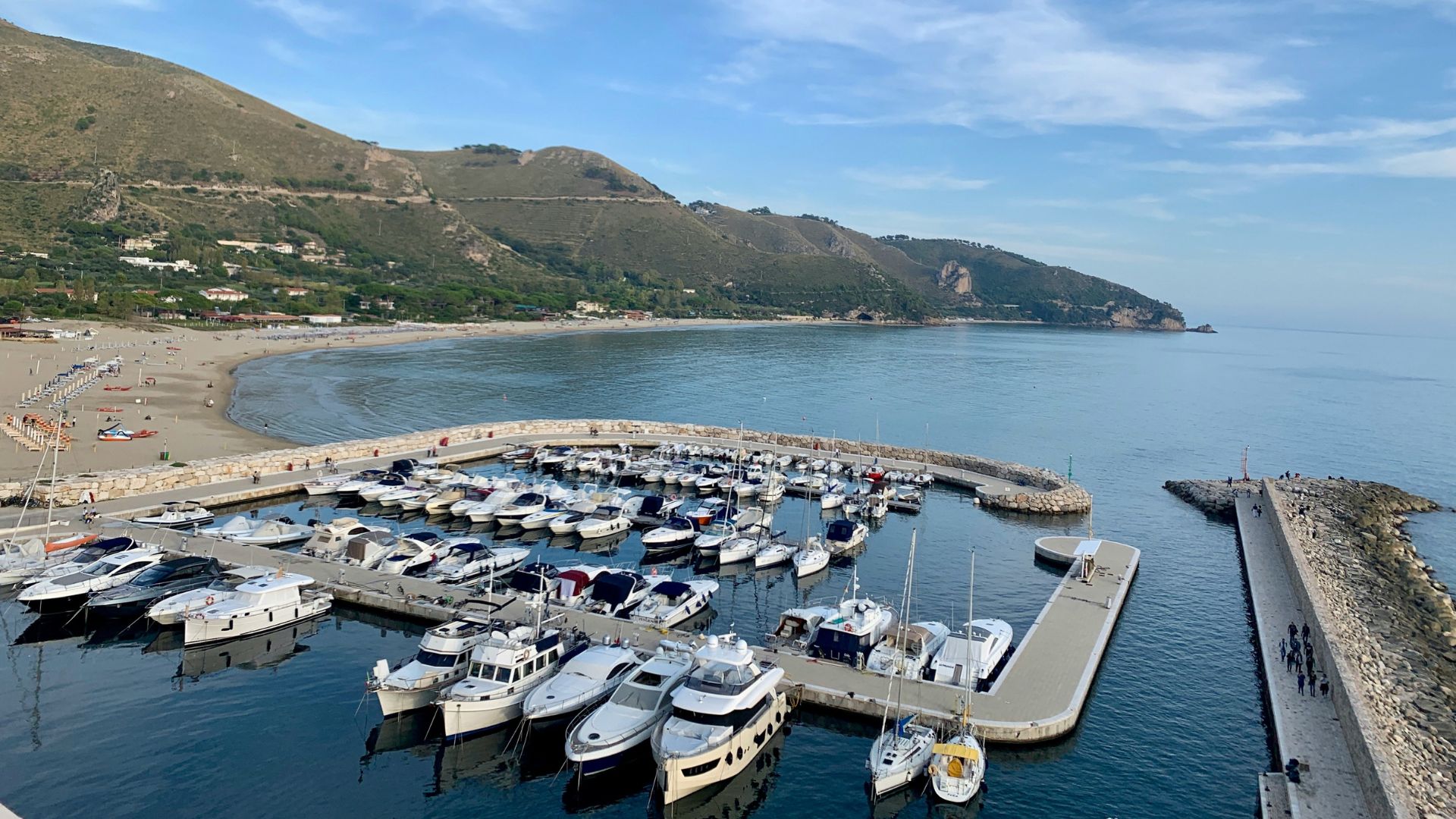


Thank you for this article with so many suggestions and explanations! We have two nights, do you have any recommendations for a nice, comfortable place to stay?
Thank you so much for your kind words about the article! I’m so glad you found it helpful. For a two-night stay in Sperlonga, you have some wonderful options. Here are a few recommendations for a nice, comfortable place to stay:
For a touch of luxury: The Virgilio Grand Hotel is a 4-star hotel with a swimming pool and wellness center. It’s modern, elegant, and located near the old town center and the beach.
For a classic beachfront experience: The Hotel Aurora is set right on the beach and has a panoramic bar. It gets excellent reviews for its location and friendly staff. Another great beachfront option is Albergo La Sirenella, which has its own private beach with sun loungers.
For a charming and authentic stay: B&B Sperlonga is a highly-rated and charming family-run bed and breakfast just a couple of steps from the beach. It’s known for its friendly and authentic atmosphere.
I would recommend checking out some recent reviews and comparing prices for your travel dates. I hope you have a wonderful and memorable stay in Sperlonga!